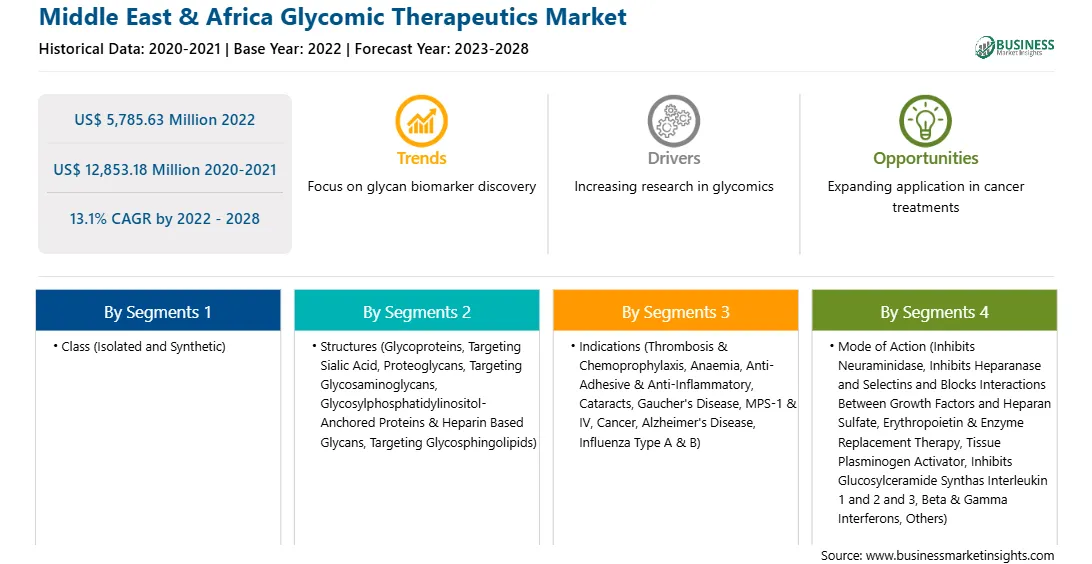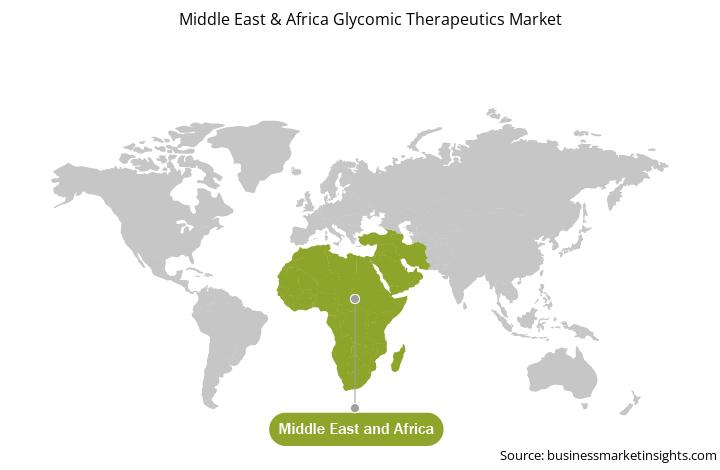New Tools in Glycomics Research to Drive Market Growth
Glycomics has the potential to pave the way for innovative treatment approaches by enhancing the characterization of molecules crucial for the development of diseases. It can be a substantial addition to technologies used in genomes and proteomics. Comparative glycomics will be essential for identifying the glycans that cause the disease. There is a rising number of studies that will provide vital information on the relationship between clinical outcomes and glycomic anomalies. Immunohistochemistry (IHC), Liquid Chromatography-Mass Spectrometry (LC-MS), and high-throughput fluorescence flow cytometry have been used to distinguish cell populations using glycoproteins. These are among the important technologies utilized to advance glycomics. LC-MS can provide structural details about glycoconjugates by separating several glycoprotein isoforms from a single protein species. Unbiased surveys of cellular proteomes are now available due to high-throughput MS-based proteomics, and the method is swiftly applied to glycomics.
Structural reference databases are quickly emerging to close the gap between the variety and complexity of glycan structures. Identification of disease-related glycoconjugates by LC-MC, which employs antibody-based capture to view glycoconjugate expression with cell-staining or fluorescence, can be used to assess or validate IHC. Targeting complete cells rather than tissue fragments, immunocytochemistry (ICC) reveals glycoprotein expression patterns at the cellular level utilizing the same imaging techniques as IHC. It will be possible to witness new aspects of glycomics, such as thorough characterization of metabolic junctions and pathways, by modifying IHC and ICC to concentrate on additional glycoconjugates, including glycolipids. Tandem or multi-technology procedures, such as MS-IHC, would provide the analytical ability to labs to handle the glycoconjugates complexity and improve glycoconjugate diagnosis. The clinical applications of glycomics are catching up to those of genomics and proteomics due to the development of new high-throughput methods to study the structure and expression of glycans and ongoing innovation in glycan biomarkers and therapies. Integrating glycomics will revolutionize precision medicine into an extensive omics strategy, providing new information on the interactions between genes, proteins, and glycans. The combination of omics data with digital health platforms has the potential to improve clinical trials and provides knowledge to researchers and doctors regarding illness. Owing to the rising scientific discoveries, widespread acceptance of glycomics and personalized medicine will necessitate significant changes in regulatory and reimbursement procedures and legislative privacy laws. Thus, customized healthcare challenges will be met and overcome with the assurance that the research behind glycomic therapeutics is adequate and that the practice of medicine is evidence-based.
Growing evidence of glycomics role in human health highlights the need to integrate glycomics into precision medicine. Cell surface expression of glycoconjugates determines in vivo recognition and in vitro interactions. Microorganisms that perform important functions for their hosts, such as food digestion and vitamin synthesis and absorption, utilize complex carbohydrates to tell immune cells that they are not harmful. Pathogens that cause deadly diseases, such as tuberculosis and malaria, use similar strategies to evade attacks by the immune system.
Market Overview
The UAE, Saudi Arabia, and South Africa are the three major countries in the Middle East & South Africa. Saudi Arabia was the largest market for glycomic therapeutics in this region in 2022. The market for glycomic therapeutics in the Middle East & Africa is anticipated to grow at a CAGR of 14.2% during the forecast period; this growth is attributed to the rising prevalence of cancer and metabolic diseases and increasing government initiatives in terms of funding and healthcare-related policies.
Strategic insights for the Middle East & Africa Glycomic Therapeutics provides data-driven analysis of the industry landscape, including current trends, key players, and regional nuances. These insights offer actionable recommendations, enabling readers to differentiate themselves from competitors by identifying untapped segments or developing unique value propositions. Leveraging data analytics, these insights help industry players anticipate the market shifts, whether investors, manufacturers, or other stakeholders. A future-oriented perspective is essential, helping stakeholders anticipate market shifts and position themselves for long-term success in this dynamic region. Ultimately, effective strategic insights empower readers to make informed decisions that drive profitability and achieve their business objectives within the market. The geographic scope of the Middle East & Africa Glycomic Therapeutics refers to the specific areas in which a business operates and competes. Understanding local distinctions, such as diverse consumer preferences (e.g., demand for specific plug types or battery backup durations), varying economic conditions, and regulatory environments, is crucial for tailoring strategies to specific markets. Businesses can expand their reach by identifying underserved areas or adapting their offerings to meet local demands. A clear market focus allows for more effective resource allocation, targeted marketing campaigns, and better positioning against local competitors, ultimately driving growth in those targeted areas.
Middle East & Africa Glycomic Therapeutics Strategic Insights

Middle East & Africa Glycomic Therapeutics Report Scope
Report Attribute
Details
Market size in 2022
US$ 5,785.63 Million
Market Size by 2028
US$ 12,853.18 Million
Global CAGR (2022 - 2028)
13.1%
Historical Data
2020-2021
Forecast period
2023-2028
Segments Covered
By Class
By Structures
By Indications
By Mode of Action
Regions and Countries Covered
Middle East and Africa
Market leaders and key company profiles
Middle East & Africa Glycomic Therapeutics Regional Insights

Middle East & Africa Glycomic Therapeutics Market Segmentation
The Middle East & Africa glycomic therapeutics market is segmented on the basis of class, structure, indications, mode of action, and country.
Based on class, the Middle East & Africa glycomic therapeutics market is bifurcated into isolated and synthetic. The synthetic segment registered a larger market share in 2022. Based on structure, the Middle East & Africa glycomic therapeutics market is segmented into glycoproteins, targeting sialic acid, proteoglycans, targeting glycosaminoglycans, glycosylphosphatidylinositol (GPI)-anchored proteins & heparin based glycans, targeting glycosphingolipids, and others. The glycoproteins segment held the largest market share in 2022. Based on indications, the Middle East & Africa glycomic therapeutics market is segmented into thrombosis & chemoprophylaxis, anaemia, anti-adhesive & anti-inflammatory, cataracts, gaucher’s disease, MPS-1 & IV, cancer, alzheimer’s disease, influenza type A & B, and others. The influenza type a & b segment held the largest market share in 2022. Based on mode of action, the Middle East & Africa glycomic therapeutics market is segmented into inhibits neuraminidase, inhibits heparanase and selectins and blocks interactions between growth factors and heparan sulfate, erythropoietin & enzyme replacement therapy (ERT), tissue plasminogen activator, inhibits glucosylceramide synthase, interleukin 1 and 2 and 3, beta & gamma interferons, and others. The erythropoietin & enzyme replacement therapy (ERT) segment held the largest market share in 2022. Based on country, the Middle East & Africa glycomic therapeutics market is segmented into Saudi Arabia, South Africa, the UAE, and the Rest of Middle East & Africa. Saudi Arabia dominated the market in 2022. Protalix Biotherapeutics; BioMarin Pharmaceutical Inc.; Genzyme Corporation (Sanofi); Bayer AG; GlaxoSmithKline plc.; and F. Hoffmann-La Roche Ltd. are the leading companies operating in the glycomic therapeutics in the Middle East & Africa.
The Middle East & Africa Glycomic Therapeutics Market is valued at US$ 5,785.63 Million in 2022, it is projected to reach US$ 12,853.18 Million by 2028.
As per our report Middle East & Africa Glycomic Therapeutics Market, the market size is valued at US$ 5,785.63 Million in 2022, projecting it to reach US$ 12,853.18 Million by 2028. This translates to a CAGR of approximately 13.1% during the forecast period.
The Middle East & Africa Glycomic Therapeutics Market report typically cover these key segments-
The historic period, base year, and forecast period can vary slightly depending on the specific market research report. However, for the Middle East & Africa Glycomic Therapeutics Market report:
The Middle East & Africa Glycomic Therapeutics Market is populated by several key players, each contributing to its growth and innovation. Some of the major players include:
The Middle East & Africa Glycomic Therapeutics Market report is valuable for diverse stakeholders, including:
Essentially, anyone involved in or considering involvement in the Middle East & Africa Glycomic Therapeutics Market value chain can benefit from the information contained in a comprehensive market report.